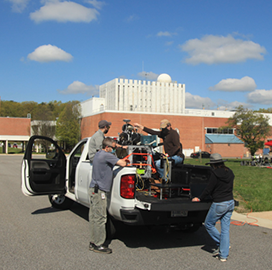NASA has tested the performance of a hazard detection lidar (HDL) technology in potentially producing images of extraterrestrial planetary surfaces and supporting safe landing for space exploration.
The space agency said Wednesday that its Safe and Precise Landing – Integrated Capabilities Evolution (SPLICE) effort prototyped and demonstrated an HDL system at Goddard Space Flight Center.
The HDL operated from a metal rig on a pickup truck and collected 3D images of buildings while traveling at various speeds and angles.
"It can collect 16 million data points in just two seconds, and each range measurement is accurate to about one centimeter,” said Ron Sostaric, SPLICE project manager, said about the HDL prototype.
NASA believes SPLICE's sensors and algorithms could help future Moon missions visualize complex landing sites such as those with shadowed craters and dangerous boulders.





